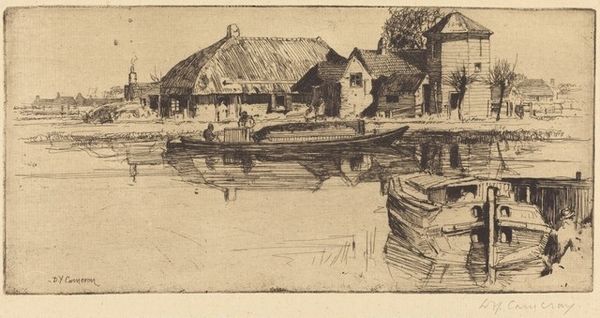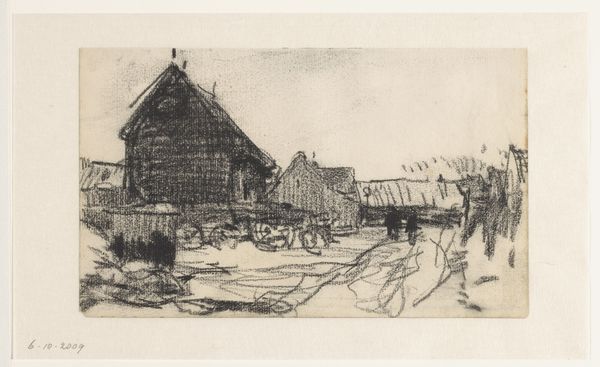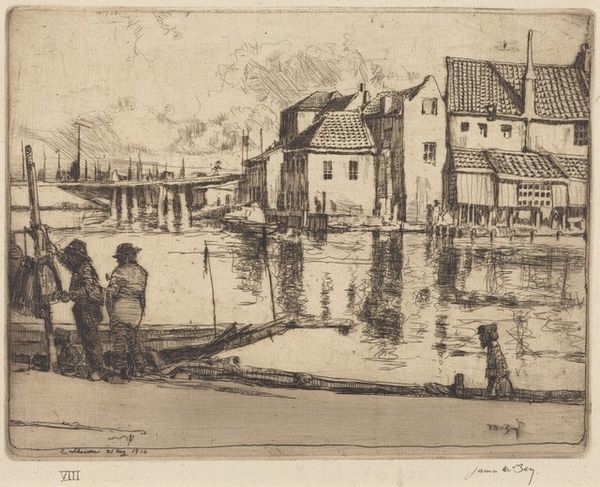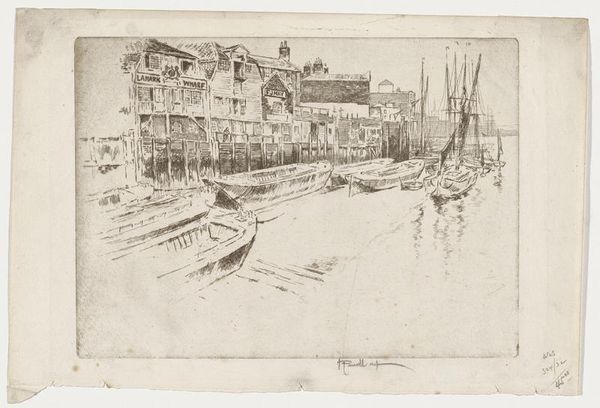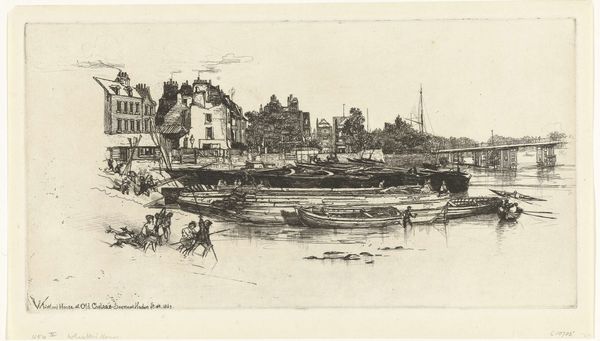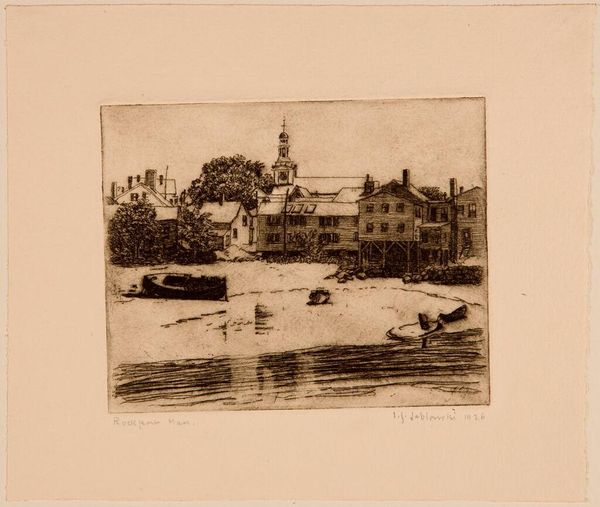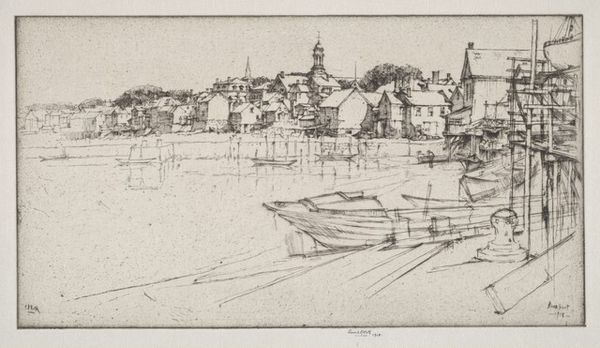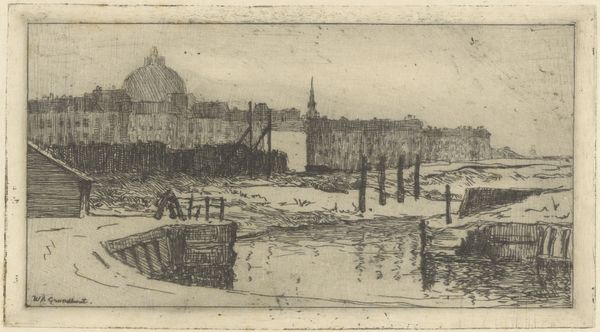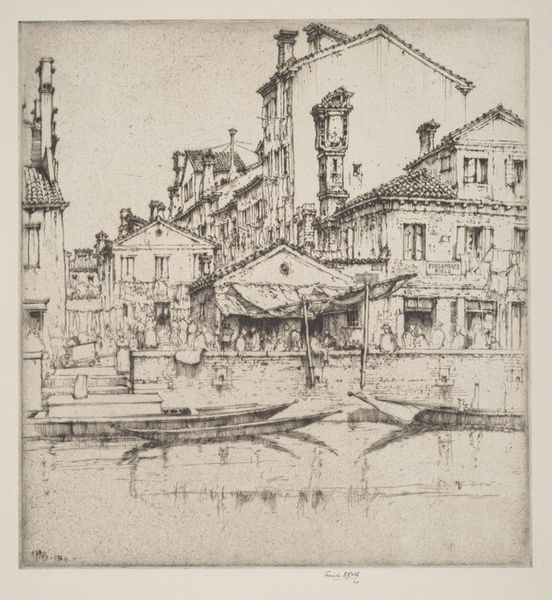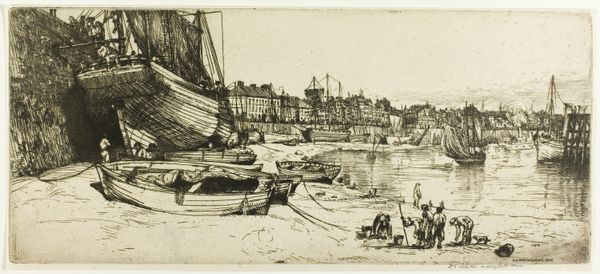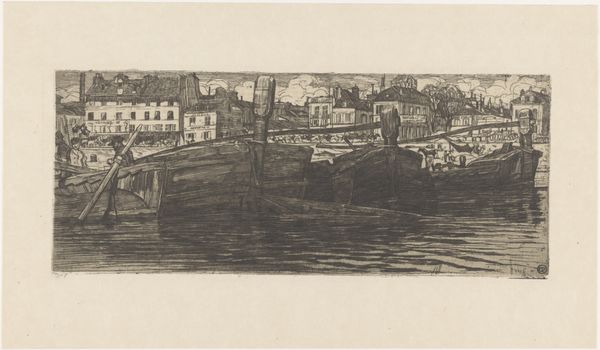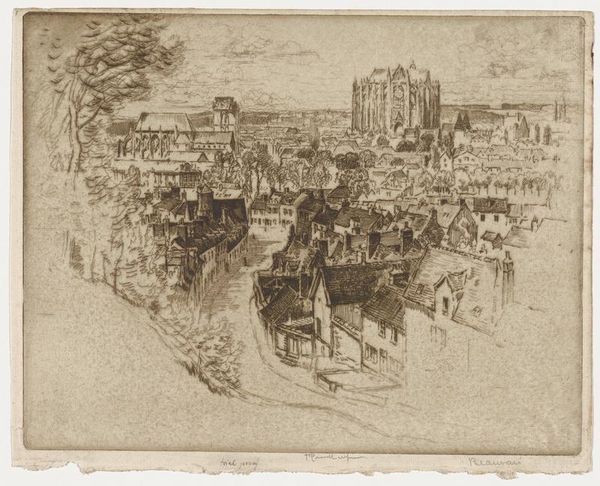
drawing, print, etching, ink
#
drawing
# print
#
etching
#
landscape
#
ink
#
cityscape
Copyright: National Gallery of Art: CC0 1.0
Curator: Here we have David Young Cameron’s etching, "Utrecht," created in 1892. Editor: It's remarkable how much atmosphere Cameron conjures with so few lines. There's a real sense of place, a kind of bustling tranquility, even with the limited tonal range of an etching. Curator: Indeed. Cameron was quite fascinated with architectural subjects and his etchings became incredibly popular, contributing to a wider enthusiasm for printmaking. The composition highlights a harmonious relationship between the built environment and its waterway, showing daily life alongside commercial activity. Editor: You know, the hatching work really draws my eye; how he coaxes different textures—stone, water, wood—all with the same medium. It shows his mastery over the tools, doesn’t it? He's elevating printmaking from simple reproduction to high art. Curator: Precisely. His art appeared in various exhibitions, garnering critical acclaim. This interest speaks to how late nineteenth-century urban societies thought of themselves – the grand buildings, industrial production, and cultural achievements all on display. How they wanted to present themselves to the world. Editor: Right. The visible lines also make me consider the process. The plates, the ink, the labour… the very stuff that builds the image and mirrors the work of the city itself. Even though it’s small in scale, this etching really feels monumental, like it contains so much labor in it, both in making and depiction. Curator: And "Utrecht," as a city, served as a fitting emblem for the era's ambitions and the Netherlands' legacy as a significant trading hub. His choice of vantage point is so deliberate, providing a view that balances industrial and natural elements. Editor: So well said, seeing the city like this also prompts me to consider access— who had the leisure to engage with artworks such as these at the time. Thank you. Curator: And thank you. The opportunity to think of an artist's intentions and techniques that reflected an age's vision, I appreciate your considerations, it's quite rewarding.
Comments
No comments
Be the first to comment and join the conversation on the ultimate creative platform.
